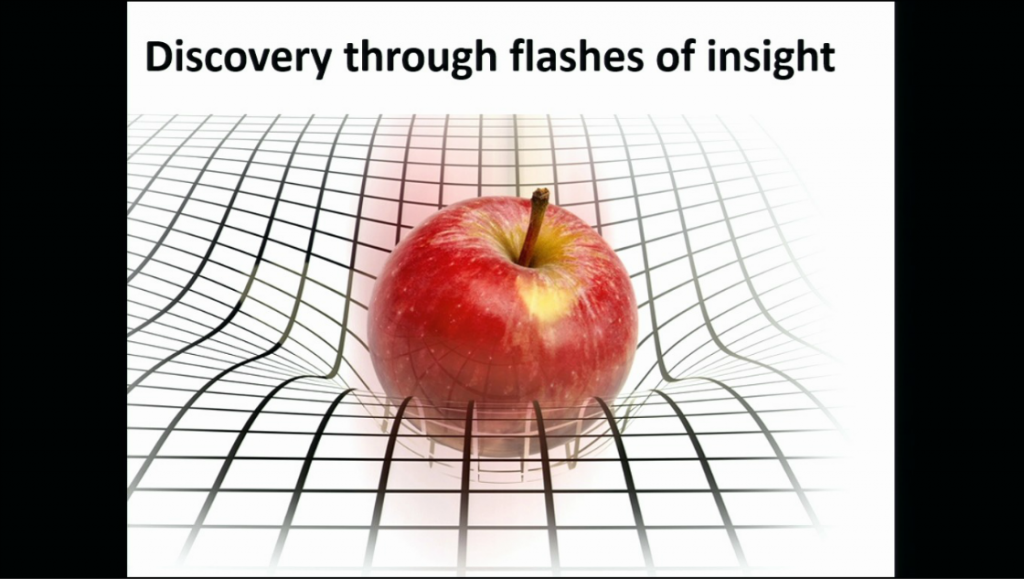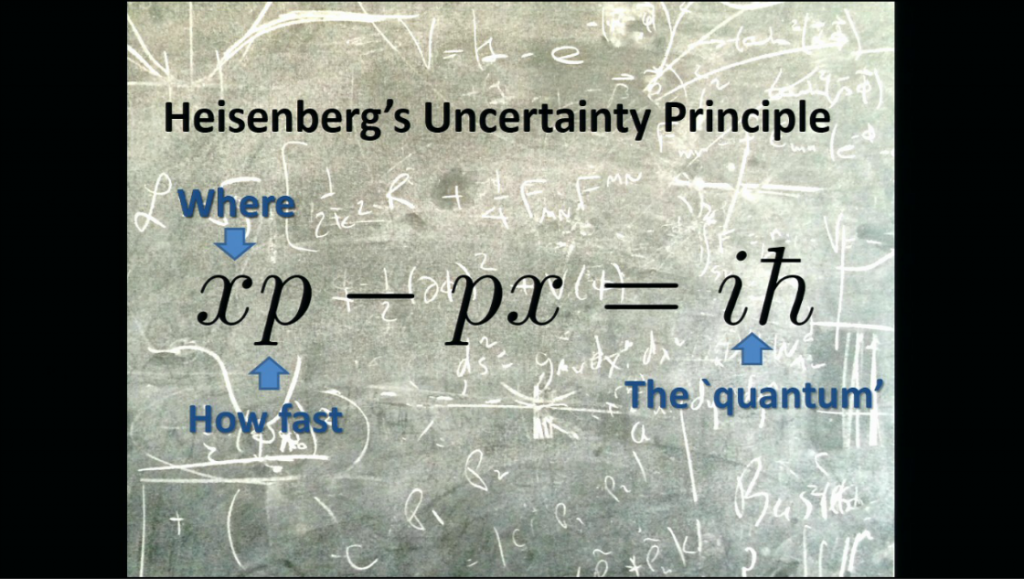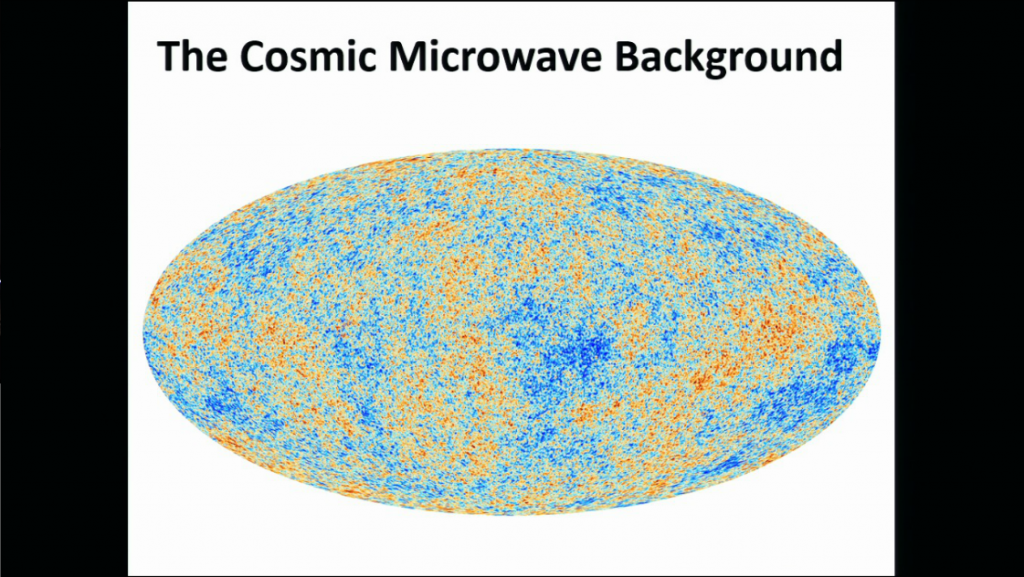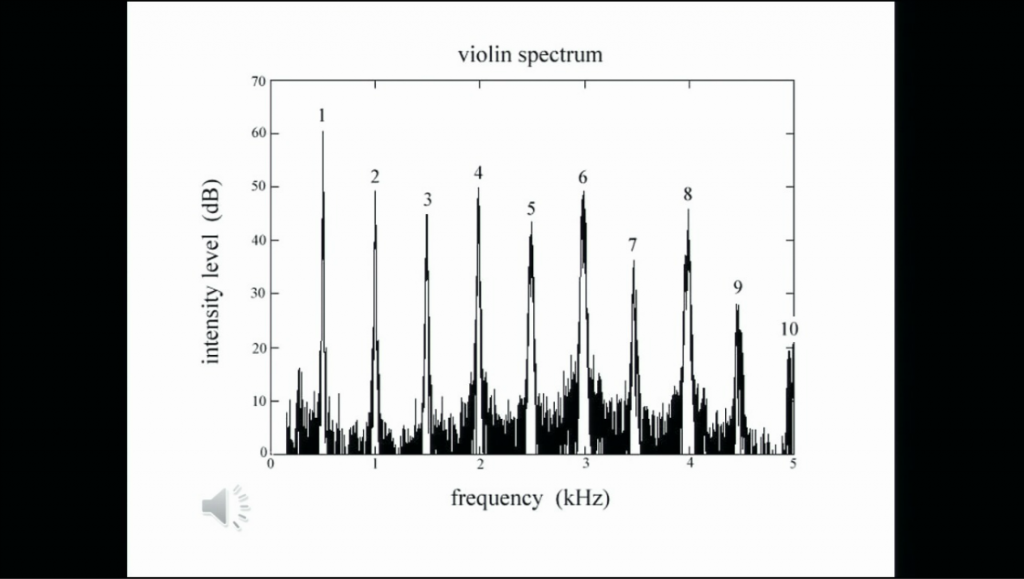So, physics is a frontier science. It sits at the very boundary and limits of a particular type of human inquiry, one that concerns itself with the origins of existence and everything that it contains. Our universe, for example. And as a frontier science and a human endeavor, it is an enterprise. And there are many different types of characters involved in this enterprise. And as a way for me to introduce them to you, I’m going to invoke a metaphor for our search for the ultimate physical truth, as it were. And the metaphor involves a landscape.
So the idea is we’re in a landscape, we’re surrounded by mountains, separated by valley, obscured by fog. And we’re trying to find the highest summit. So there’s a particular type of character that the physicist and author Lee Smolin and identified as a summit seeker, or a mountaineer, someone that is immediately next to a tall mountain and decides, “Right, I’m going to go up.”
There’s also a particular type of character known as a valley crosser, or an explorer, who thinks to themselves, “Well, there’s a very tall mountain next to me, but perhaps three valleys over…I can’t really see what’s over there, but maybe there’s an even taller mountain. So I’m going to go cross into the unknown.”
There are entrepreneurs. There are characters who have an appetite for risk. Who can inspire and drum up people to go along with them on any particular adventure. There are poets. These characters don’t care where they end up. They just enjoy the art and the craft for its own sake. There are literary critics. There are people who have strong opinions about the way things are going, about the state of the art, and seek to influence other people’s opinions.
There are craftsmen and craftswomen, people who are so talented at a particular aspect of this enterprise that watching them do their thing becomes a thing unto itself, an art form unto itself. There are engineers, who get a kick out of solving problems with a minimal set of resources in the cleverest way possible. And like in any field, there are also politicians. And the less you speak about them, the better.
And if I were to identify myself in one of these, I would say that I aspire towards being something in between a craftsman and a valley crosser. Although in practice my valley crossing has been almost reckless, that it’s not been particularly good for my career. Although I survived and I’m here to tell you the tale.
So, how does one practically even go about this enterprise of discovery? So let’s begin with valley crossing. And in particular let’s begin with an extreme version of it, which is you go across several valleys, and you find something really remarkable that really shatters people’s view of how things ought to be done, and really redefines a new paradigm. And the way you go about that is very simple. Be a genius. Or be very lucky.
Now, I don’t mean for you to take that too literally. I think genius is a myth that’s often created after the fact, a legend that is rewritten after the fact. But nevertheless it is true that in almost everything we do, we are the beneficiaries of these various remarkable flashes of insight that now allow us take effortless shortcuts through whatever it is that we’re doing.
So, one that is particularly relevant today is Einstein realizing that gravity is set apart as a force from all the other forces in nature. Because what gravity really is isn’t…well it is a force, but the way it acts is rather remarkable. Einstein realized that spacetime wasn’t this static arena in which things just sort of happened. Einstein realized that in fact spacetime itself is a thing, it’s an elastic medium. And it gets distorted by material objects.

So if this apple were the sun, the sun is distorting the fabric of spacetime around it such that if anything tried to move in a straight line, which it ordinarily would do effortlessly, it might sort of take a curved path. It might even get trapped in a circle going round and round the sun. Like the Earth. And this example is particularly relevant today because at this very moment, in fact, there is a press conference happening in Washington DC where the LIGO collaboration is most likely going to announce the discovery of ripples in this fabric of spacetime, gravitational waves. So it’s a very historic for physics. And I consider this insight to be one of the greatest leaps a human mind has ever made.
And then perhaps on a more practical level, on a day-to-day, no one’s going about making revolution happen every day. In fact it’s not always the context for something like that to happen. So on a day-to-day basis in the day-to-day process of summit seeking, the more sort of practical thing of trying to solve problems, to discover new things within an existing paradigm. It’s not that everything happens in a vacuum. Everything that we do, whether it’s implicitly acknowledged or explicitly acknowledged, borrows from these flashes of insight. We stand on the shoulders of giants, as Newton himself prefaced in his Principia Mathematica.
So if you were to step back and ask what the meta-process of this would be, if somehow there were a manual of discovery, it would contain the entries of all the people that have gone before. Einstein would’ve come along and written something. Descartes will have come along and written something. And Newton would’ve come along and written something. Darwin would’ve come along and written something. And whether we acknowledge it or we don’t, we are the beneficiaries of this learned metalogic.
And if this thing were actually a book, its title would be called Heuristics, or the art of invention. And instead of staring at each new problem like it were a blank page, you could instead begin by asking yourself what is essential about the problem? What can be ignored about the problem. What is superfluous detail? Does this look like another, easier problem? And could you solve that simpler problem?
So I want you to pay attention to this, because this is actually the sort of meta-process that the scientific method actually invokes. Are you looking at the problem the right way? Maybe it’s not even a problem. Maybe the bug is a feature. Are you trying too hard? Perhaps you’ve been working on something for years and years and years, and maybe that’s telling you something. Has that problem already been solved? And I think this is something that a lot of people can understand, because it’s often the case that people look to nature for inspiration for certain problems in design. And I think the most dramatic example of that is something that probably brought a lot of you here, which is when the Wright Brothers realize that in trying to make this airplane object they were trying to invent fly, they needed to borrow a design that they saw from bird’s wings. That problem had already been solved by nature.
So, the scientific method was perfected in the crucible of natural science, and physics in particular. And an old professor of mine once told me that a good theoretical physicist is intrinsically a lazy person. And so these heuristics of ignoring superfluous detail, simplifying the problem to its barest essentials, maybe even making a caricature out of it, solving that simpler problem. If you can’t solve that simpler problem, solve an even simpler problem. This actually works in physics. Because the universe is intrinsically a lazy place.
Structures that we see in one particular context in one particular scale are reproduced across vastly different contexts and vastly different scales. And this is telling us something. That the universe prefers, it has this penchant for this underlying simplicity and economy of description. If you like, the universe outsources the mechanics of its existence to a very small set of universality classes of phenomenon. And none is so dramatic, I think, than the following fact, that if you take any system close enough to equilibrium… And by equilibrium I mean if you just leave it there it stays that way forever, its ground state, its lowest energy configuration. Any system close enough to equilibrium can be described, once you really break down the way you describe it in terms of mathematics, as a collection of interacting simple harmonic oscillators. Like springs. This is just something that is. The collective motion of which look like waves.
So, by this I mean networks of neurons in your visual cortex trying to understand or process an image. Flocks of birds. Crystals. Traffic flow. All of this can be boiled down to the same identical mathematics. It’s a remarkable fact. Waves on water are very visceral example of this. We all see this, right. So, water is a thing. It exists. And little tiny disturbances on water are waves. These are very nonlinear waves, but if you imagine they were small enough, they’d be quite linear. And these localized excitations carry energy around.
What if I told you that fundamental particle physics is nothing more than that? That particles are like waves, localized excitations on an underlying quantum field. So, there’s this thing called the electron field, and electrons are localized excitations just like waves on the ocean, floating around bouncing off of each other. Solar quarks. Quarks are excitations of a fundamental quark field. Photons, gluons, all the fundamental particles you can imagine, are described by the same underlying mathematics.
And if you took this to its logical extreme, almost absurd extreme if you will, there’s a candidate theory for the universal called string theory, which states that there aren’t these separate fields. There’s only one field, the string field. And its localized excitations are one-dimensional extended objects—strings—whose different notes are the different particles that we see. And whose fundamental note is actually just a distortion of spacetime itself. And alternating the next highest notes are different force carriers, and different charged particles. So, physicists makes fun of themselves when they realize this. And they say that physics is that of all human experience that could be boiled down to study of simple harmonic oscillators. That’s it. So we’re not very clever.
So let’s say there is something that we cannot explain. Within the working heuristics of a practicing physicist, there’s a particular type of of paid adventure, a funded adventure, if you like, that I just find remarkable. And it’s called phenomenology. And to me it’s a remarkable thing. It’s very humbling thing that myself and my colleagues are paid by your taxes to go forth and do this for a living. Which is that if we go around and we see something that we cannot explain in the universe (galaxies moving in a way that there seems to be some missing matter, for example) you are entitled to break the laws of physics or bend them in any convenient way such that you end up explaining what you see. To invent a particle and call it dark matter, for example.
And in order to give you another concrete example of this, I first need to teach you a little bit about quantum mechanics in a slide, if it’s possible, so bear with me.

I apologize for the equation. I promise I’ll explain it.
The quantum mechanical universe is a very strange universe. Our day-to-day intuition about our relationships with space and time are very different. Measuring where something is, and how fast it is going are not communting operations. So either you’re looking at me on the stage or you’re staring at your computer screen or your iPhone or whatever it is. But you’re looking at something, and in doing that (Let’s say you’re looking at me.), you are identifying where I am (I’m standing right here.) and how fast I’m going. (I’m standing still.)
But I could have done that operation in reverse. I could have first looked at how fast I was going, maybe with a speed gun or something. And then tried to figure out where I was. And ordinarily you’d think that the order of those two operations shouldn’t matter. And intuitively, at the scale at which we exist, they don’t. But in the quantum mechanical universe, that is not true. The order of operation matters. Which is telling us something very remarkable. That measuring where something is and how fast it’s going cannot be described by numbers. Because numbers commute. You multiply them in a particular, you switch the order, you get the same thing. So the fact that they don’t commute means that the difference is not zero, and so they’re no longer described by the usual numbers.
And in fact they’re described by these complicated things called operators, but we don’t need to get into them. And this irreducible uncertainty in determining where and when something is, is set by this thing called the quantum. So what that’s telling you is that it’s impossible to actually localize something, because if you could, you’d be able to make a statement, “I know somebody is there and they’re not going anywhere,” in contradiction to the laws of quantum mechanics.
So that leads to all sorts of strangeness. Particles act like waves. Waves act like particles. And in reality they’re neither. What’s happening is we are monkeys with brains. We’ve evolved the perception of the world around us because that’s what just happened through evolutionary necessity. But at the very fundamental scale, the universe doesn’t agree with our monkey-with-brain concepts, and they completely break down. Things can exist in a superposition of quantum states. Cats can be both dead and/or alive. So the very grammar and boolean logic of ordinary intuition completely fails. So the quantum mechanical universe is a very strange one. But we understand it through mathematics. But we are very bad at explaining it through our language. This is one of the many ways in which language is limiting our understanding of the universe.
So now it turns out that when we try to make gravity fit with our quantum mechanical description of particles as little waves floating around, there are all sorts of infinities that we don’t know how to deal with in our calculations. And so the reason for those infinities is in fact that spacetime is infinitely divisible. So that means between here and here there’s always a point in between. And no matter how small or how short a distance I look, there’s always a point in between. And that causes problems in our equations.
So, a phenomenological thing to do would be, how about we fix that? How about we break that? And then see what happens. Shoot first, ask later. So, what if spacetime itself satisfied a version of the uncertainty principle? Imagine between us there is an imaginary plane. And I’m pointing to a point right here. So how do I know to tell you that this point is here? I would first have to tell you how far along the X axis (if you allow me to tell you that this direction is X) it is, and how far up it is. So the point here is this much on the X direction, this much on the Y direction. But it also is this much up along the Y direction, and this much along the X direction. That’s our usual geometry.
But if we take the lesson from quantum mechanics and say, what if space time itself is intrinsically quantum? What if that operation did not commute? And you’d end up in a different place? That means the idea of a point is meaningless. It is a fiction that you’ve created because you’re a monkey with a brain at a large large scale. Whereas fundamentally, points don’t exist. And this geometrical structure has broken many of the rules of mathematics. There’s a lot of mathematicians that would’ve been very upset at this until they figured out how to deal with it.

And so if you would imagine what space looks like at that very small scale, it goes from this infinitely divisible continuum into this chaotic quantum foam. Points are just not resolvable. Once you try to resolve something, it flips and becomes something else. So here, there, now, later, are all mixed up into this cloud of possibility and uncertainty. So, if we were to scale this up to the larger scales and imagine someone walking down a flight of stairs, they might appear as a jagged set of persistences, depending on how you’re looking at the scene.

So, shoot first, ask later, okay? So we said, “Well, let’s just hack spacetime and make it quantum.” But as physicists, we have to actually ask the question, is it true? Or is this just a game we’re playing on a piece of paper? So, the energies we need to probe this physics… To put this into context, somewhere over there, like seven, ten kilometers over there, is the Large Hadron Collider. It is twenty five kilometers in circumference. To probe the physics that we would need to test the quantumness of geometry, we would have to build a particle accelerator the size of the galaxy. So I think it’s fair to say that no government is going to fund that anytime soon.
So, we do the next best thing and we sift through the evidence left over from the Big Bang itself, and you’re looking at it right there on that slide. It is relic radiation left over from when the universe was a very hot, dense place. So, once upon a time, the universe was such a hot place that light and matter couldn’t breaks free. They were just bouncing off of each other. But there was a moment when the universe was 378,000 years old that suddenly it cooled enough that light just broke free. And there’s was this flash. The universe suddenly became transparent. And that’s were looking at. And it is a picture of a vibrating plasma, and it is literally an ultrasound of the universe when it was a baby.
So, you don’t need to look at something to understand how it sounds like. And by listening to something, you can actually tell a lot about it. If you were to shut your eyes and someone were to play you a violin playing middle A:
It would sound something like that. And you didn’t need me to even tell you what that was. You could’ve been blindfolded and you’d recognize immediately that it was a violin because your brain took that signal and broke it down. Your audio cortex to that signal and broke it down in terms of fundamental harmonics.

So the loudest note is of course middle A. The next loudest note is also A, octaves up. And so this thing is a Fourier transform. It’s decomposing the sound of the violin into all its fundamental harmonics. And from that you can tell it’s a violin. You can tell its shape. You can tell a lot about it.
So, if we took that vibrating plasma and imagined we were back then when the universe was 378,000 years old, and we stuck our head into that primordial goop, it would sound a bit like this:
Sounds like white noise, but again, we notice if we did the same thing that we did to the violin, there’s one particular note that’s quite loud. And there’s a couple of harmonics. And the third harmonic is a lot louder than it should be, and that actually tells us that the universe is mostly made up of this thing called dark energy, and a little bit of this thing called dark matter.
And if you were to ask where is the evidence, if there was any evidence that spacetime would have any graininess associated with it, we would expect to see little extra ripples on the right of this plot that we don’t see, to the accuracy which we measured. So therefore this idea wasn’t true. No dice. No rewards for me and my collaborators. But that’s how phenomenology works. You break the laws of physics to try and explain something that you think might be going on, and then you don’t care about the consequences until you’re proved wrong.
So, we have a very simple model of the early universe. It explains everything that we’ve seen around us, but it begs for deeper explanation and we don’t really know what that explanation is. So it’s very pleasing that we understand so much. It’s also very frustrating that we can’t see what is really the thing behind the Big Bang. It could be that the underlying picture is far beyond what we’ve imagined, and it’s a situation summed up very neatly by Niels Bohr when he quipped to a colleague that, “Your theory is crazy, but it’s not crazy not to be true.” Keep trying.
So, I have nothing more. I hope I’ve given you a little taste of how the metalogic of discovery works in physics, and a little sort of like the mental hacks that we use to try and get further. And I think the thing I’ve learned, number one, is that there are just absolutely no rules. You are on your own. But, you can piggyback off of what other people have learned for you on your behalf. And I think the thing that I’d like to leave you with that I think is the most important to me, is that the thing that I’ve noticed the most about the scientists that I respect and admire the most is that they’re willing to introduce noise into their process to allow them to make associations that they wouldn’t have otherwise. And that have a very strong mischievous streak. They like to go on adventures.
Thank you very much.
Sophie Lamparter: Thank you very much, Subodh. That was fascinating. How do you create noise in your universe?
Subodh Patil: Well, I think I do a lot of reading that’s not related to my work. I have a guitar next to my side whenever I’m doing a calculation. I always pick it up. I walk around a lot. But I mean there’s other things you could do. I try to just sort of get away from hanging out with the “crowd,” as it were. I’m sort of allergic to the sort of…the herd. And I try to be as far away to the periphery as possible.
Lamparter: So, Subodh and I met about three years ago because he was collaborating at—you know CERN has this artist in residency program. And so he was the scientific partner of a sound artist, Bill Fontana, who is actually from San Francisco. And we’re speaking about antidisciplinarity. Do you think those conversations are kind of helpful also for your work, or at least help you to create noise, or…
Patil: No, they’re amazing. I think of one of the things that disappoints me about the modern world is that we sort of ghettoized our brains so much in terms of these little microcommunities, and people rarely cross over them. And hanging out with someone like Bill, for example, was very nice because I imagine well, maybe this is what it would’ve been like to have been in Paris in the 1920s, hanging around drinking coffees in a cafe and comparing my notes of my calculations with a Cubist. That’s what it felt like.
Lamparter: Yeah. That’s what we’re here for today, right? Okay, thank you so much.
Further Reference
Enter the Anti-Disciplinary Space session details at the Lift16 site.
